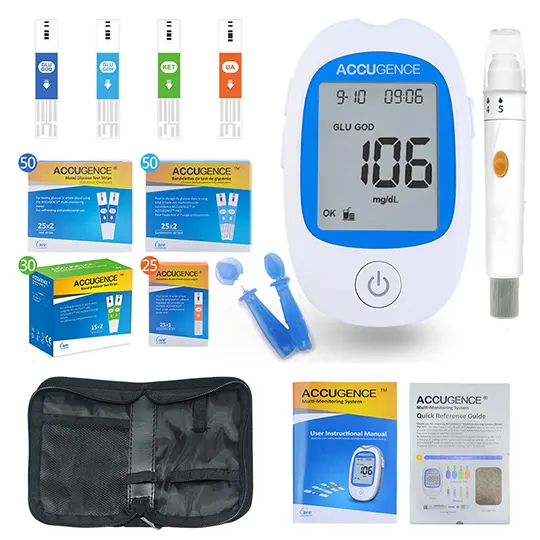isotretinoin (Amnesteem, Claravis, Myorisan, Absorica, Zenatane)
Classes: Acne Agents, Systemic; Retinoid-like Agents
Dosing and uses of Amnesteem, Claravis (isotretinoin)
Adult dosage forms and strengths
capsule
- 10mg (Absorica, Amnesteem, Claravis, Myorisan, Zenatane)
- 20mg (Absorica, Amnesteem, Claravis, Myorisan, Zenatane)
- 25mg (Absorica)
- 30mg (Absorica, Claravis)
- 35mg (Absorica)
- 40mg (Absorica, Amnesteem, Claravis, Myorisan, Zenatane)
Severe, Recalcitrant Nodular Acne
Severe nodular acne unresponsive to conventional therapy, including systemic antibiotics
0.5-1 mg/kg/day PO divided BID for 15-20 weeks
Dose up to 2 mg/kg/day (as tolerated) if disease is very severe with scarring or is primarily manifested on the trunk
Dosing considerations
- >2 months after discontinuation: If warranted by persistent or recurring, severe nodular acne, may initiate a 2nd course of therapy
- If total nodule count is reduced by >70% prior to completing 15-20 weeks, may discontinue drug
Administration
Swallow capsule whole with full glass of water to reduce esophageal irritation
Amnesteem, Claravis, Myorisan: Take with food (significantly improves absorption)
Absorica: May be taken with or without food
Pediatric dosage forms and strengths
capsule
- 10mg (Absorica, Amnesteem, Claravis, Myorisan, Zenatane)
- 20mg (Absorica, Amnesteem, Claravis, Myorisan, Zenatane)
- 25mg (Absorica)
- 30mg (Absorica, Claravis)
- 35mg (Absorica)
- 40mg (Absorica, Amnesteem, Claravis, Myorisan, Zenatane)
Severe, Recalcitrant Nodular Acne
Severe nodular acne unresponsive to conventional therapy, including systemic antibiotics
<12 years: Safety and efficacy not established
≥12 years: 0.5-1 mg/kg/day PO divided BID for 15-20 weeks
Dose up to 2 mg/kg/day (as tolerated) if disease is very severe with scarring or is primarily manifested on the trunk
Dosing considerations
- >2 months after discontinuation: If warranted by persistent or recurring, severe nodular acne, may initiate a 2nd course of therapy
- If total nodule count is reduced by >70% prior to completing 15-20 weeks, may discontinue drug
Ichthyosis (Orphan)
Orphan designation for treatment of congenital ichthyosis
Orphan sponsor
- Patagonia Pharmaceuticals, LLC; 50 Tice Blvd, Suite A35; Woodcliff Lake, NJ 07677
Administration
Swallow capsule whole with full glass of water to reduce esophageal irritation
Amnesteem, Claravis, Myorisan: Take with food (significantly improves absorption)
Absorica: May be taken with or without food
Amnesteem, Claravis (isotretinoin) adverse (side) effects
>10%
Cheilitis (90%)
Xerosis
Xerostomia
Dry nose
Epistaxis
Pruritus
Conjunctivitis (including blepharoconjunctivitis) (40%)
Irritation (40%)
Increased erythrocyte sedimentation rates (40%)
Thinning of hair (which has persisted in rare instances)
Palmoplantar desquamation
Skin fragility
Skin infections (eg, paronychial infections)
Rash (including erythema, seborrhea, eczema), photosensitivity
Hypertriglyceridemia (25%)
Bone or joint pain
Generalized muscle aches
Arthralgia
Decreased HDLs (15%)
Increased LFTs (15%)
Increased CPK (12-24%)
Decreased hemoglobin concentration and hematocrit
Decreased erythrocyte and leukocyte counts
Increased platelet count
1-10%
Decreased bone mineral density (8.8%)
Premature epiphyseal closure (3%)
Frequency not defined
Lethargy
Fatigue
Headache
Anorexia
Nausea
Vomiting
Increased appetite
Thirst
Warnings
Black box warnings
Embryofetal toxicity
- Do not use in female patients who are or may become pregnant, because therapy poses an extremely high risk for severe birth effects (with any dose or duration)
- Documented embryofetal effects include internal and external abnormalities, IQ scores of <85, spontaneous abortion, premature birth, and fetal death
- Documented external abnormalities include skull abnormality, ear abnormalities (including anotia, micropinna, small or absent external auditory canals), eye abnormalities (including microphthalmia), facial dysmorphia, and cleft palate
- Documented internal abnormalities include CNS abnormalities (including cerebral abnormalities, cerebellar malformation, hydrocephalus, microcephaly, cranial nerve deficit), cardiovascular abnormalities, thymus gland abnormality, and parathyroid hormone deficiency
- Discontinue immediately if pregnancy occurs and refer patient to an obstetrician-gynecologist experienced in reproductive toxicity for evaluation
- Potentially any fetus exposed during pregnancy can be affected, but there are no accurate methods to determine whether an exposed fetus has been affected
Restricted distribution program
- Prescribers must register with iPLEDGE, an FDA-approved risk management program designed to minimize pregnancy exposures to isotretinoin (enhancement of earlier riskMAP [risk minimization action plan]); patients must be registered and meet all requirements of iPLEDGE
- Patients of childbearing potential must not be pregnant or breastfeeding, must be capable of complying with approved contraceptive methods, and must be reliable in following instructions
Contraindications
Pregnancy (see Black box warnings)
Hypersensitivity to isotretinoin or vitamin A
Cautions
Significant adverse effects are associated with isotretinoin use
Embryofetal toxicity; major congenital malformations, spontaneous abortions, and premature births documented (see Black box warnings)
Do not donate blood during therapy and for 1 month after discontinuing treatment, because of embryofetal toxicity risk
Restricted distribution program (iPLEDGE), a risk management program to minimize pregnancy exposure, has been implemented (see Black box warnings)
Microdosed, progesterone-only preparations (‘minipills’) are an inadequate method of contraception during treatment
Depression and psychosis reported; rare reports of suicidal ideation, suicide attempts, suicide, and aggressive and/or violent behaviors
Pseudotumor cerebri reported; some reports involved concomitant tetracycline use
Serious skin reactions reported (eg, Stevens-Johnson syndrome, toxic epidermal necrolysis)
Acute pancreatitis reported with either elevated or normal serum triglyceride levels, including rare instances of fatal hemorrhagic pancreatitis; discontinue if unable to control hypertriglyceridemia
Increased triglycerides and total cholesterol levels reported; whereas, decreased HDL-cholesterol reported
Hearing impairment reported and may persist after discontinuing therapy
Hepatitis may occur; mild to moderate liver enzymes elevations also reported
Associated with inflammatory bowel disease (including regional ileitis); discontinue immediately if abdominal pain, rectal bleeding, or severe diarrhea occurs
Negative effect on bone mineral density reported; caution with childhood osteoporosis, osteomalacia, chronic corticosteroid use, or anorexia nervosa
Musculoskeletal symptoms, including arthralgia, may occur
Skeletal hyperostosis observed in clinical trial for keratinization disorders
Premature epiphyseal closure reported spontaneously with normal doses
Ocular abnormalities observed, including corneal opacities, decreased night vision, and dry eye
Hypersensitivity reactions (eg, anaphylactic, cutaneous, allergic vasculitis) reported; severe allergic reaction requires discontinuation and medical management
Laboratory monitoring
- Pretreatment monitoring: LFTs (1 day before starting initiating therapy), 2 pregnancy tests (negative result 2 weeks before), and fasting lipid profile (including triglycerides)
- During treatment: Monitor LFTs and lipids at weekly or biweekly intervals until response to isotretinoin established
- Blood glucose, CPK (particularly in those undergoing vigorous physical activity)
- Ongoing negative pregnancy tests required according to iPLEDGE rules
Pregnancy and lactation
Pregnancy category: X (see Black box warnings)
Lactation: Unknown whether distributed into breast milk; because of potential for serious adverse reactions in nursing infants, do not administer to women who are breastfeeding
Pregnancy categories
A: Generally acceptable. Controlled studies in pregnant women show no evidence of fetal risk.
B: May be acceptable. Either animal studies show no risk but human studies not available or animal studies showed minor risks and human studies done and showed no risk.
C: Use with caution if benefits outweigh risks. Animal studies show risk and human studies not available or neither animal nor human studies done.
D: Use in LIFE-THREATENING emergencies when no safer drug available. Positive evidence of human fetal risk.
X: Do not use in pregnancy. Risks involved outweigh potential benefits. Safer alternatives exist.
NA: Information not available.
Pharmacology of Amnesteem, Claravis (isotretinoin)
Mechanism of action
Retinoid; inhibits sebaceous gland function and keratinization; clinical improvement of nodular acne associated with sebum secretion reduction
Absorption
Bioavailability: Low
Peak plasma time
- 5.3 hr (fed); 3.2 hr (fasted)
- Absorica: 6.4 hr (fed); 2.9 hr (fasted)
Peak plasma concentration
- 862 ng/mL (fed); 301 ng/mL (fasted)
- Absorica: 395 ng/mL (fed); 314 ng/mL (fasted)
AUC
- 10,004 ng•hr/mL (fed): 3703 ng•hr/mL (fasted)
- Absorica: 6095 ng•hr/mL (fed); 4055 ng•hr/mL (fasted); AUC (fasted state) greater than Accutane, and therefore not interchangeable with generic products
Distribution
Protein bound: 99.9% (primarily albumin)
Metabolism
Metabolized by liver oxidation via hepatic isoenzymes CYP2B6, CYP2C8/9, and CYP3A4
Metabolites: 4-oxo-isotretinoin, retinoic acid (tretinoin), 4-oxo-retinoic acid
Elimination
Half-life: 10-20 hr; 22-24 hr (Absorica)



